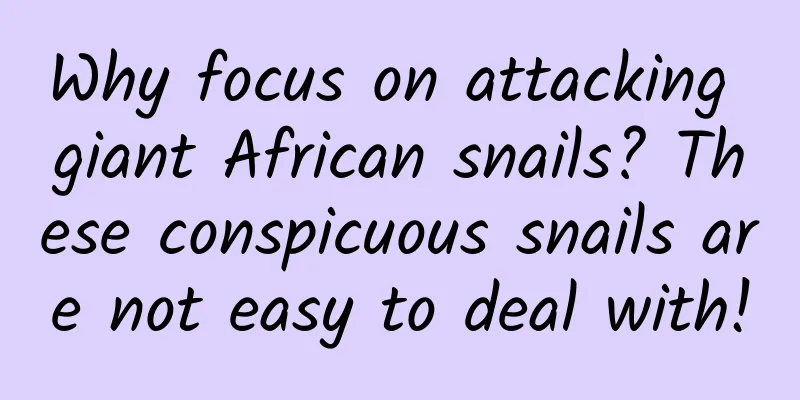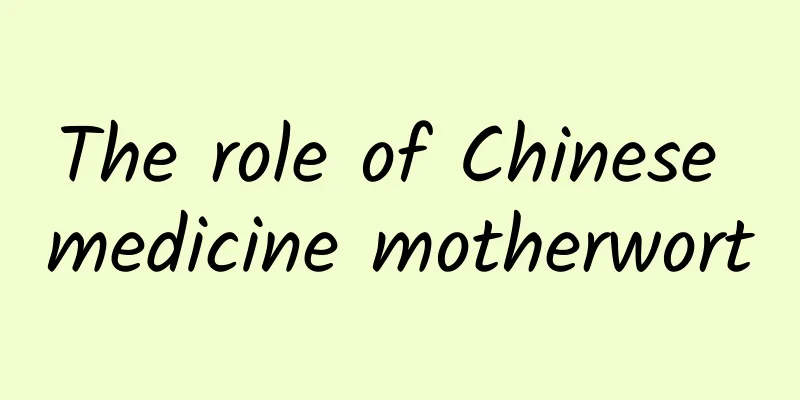Why focus on attacking giant African snails? These conspicuous snails are not easy to deal with!

|
It is a "conspicuous bag", with a large head, slow crawling, thick shell, and brown spots, which looks a bit like a conch. But it is a terrestrial snail, and it has been listed as one of the first invasive alien species in my country. This is the brown cloud agate snail, commonly known as the African giant snail. Recently, Fuzhou City, Fujian Province officially launched the 2024 winter concentrated eradication operation of African giant snails, with the aim of reducing the base number of African giant snails in the following year. A big eater with a varied diet As the largest land snail in the world, the African giant snail is native to East Africa. Its invasion began in Africa, and it invaded Madagascar around 1800, and arrived in Sri Lanka around 1900, and continued to spread to East Asia and Southeast Asia in the next two or three decades. In my country, the African giant snail was first seen in the 1930s, and it may have been accidentally introduced by plants carrying eggs or young snails. At present, it is distributed in many provinces in southern my country, and in some places it can be seen almost everywhere. The giant African snail has a varied diet and a large appetite. It is a big eater, eating about one-tenth of its own weight every day. From 10 pm to the early morning of the next day is its peak "meal" period. If there are many giant African snails around, we can hear the "rustling" sound of eating. The food of the giant African snail includes food crops, cash crops, and even trees and weeds. It gnaws on young shoots, twigs, tender leaves, and the skin of tree trunks, causing great harm to agriculture, horticulture, and forestry. For example, in Fujian, the giant African snail can cause a loss of 15%-30% of horticultural plants; in Jiangxi, these fierce land snails can even pass through shallow water to harm rice, causing a 2%-15% reduction in rice production. Become an intermediate host for nematodes Another trouble brought by the giant African snail is that after it encounters the native pathogen Guangzhou roundworm, it becomes the intermediate host of the nematode. Parasites such as trematodes and nematodes have a complex life cycle involving intermediate hosts. Snails such as slugs and river snails can serve as intermediate hosts for Angiostrongylus cantonensis, while reptiles such as shrimps, crabs, planarians, frogs, and lizards can serve as relay hosts. Rodents such as Rattus norvegicus, Rattus norvegicus, and Rattus fulvidraco are the main definitive hosts of Angiostrongylus cantonensis. Although humans are not the most suitable definitive hosts, they can be infected and have severe symptoms. Usually, humans develop the disease by eating infected hosts or vegetables and food contaminated by larvae. In the human digestive tract, the Guangzhou roundworm will pass through the intestinal wall into the blood and cause tissue damage during migration in the body. After that, it will cross the blood-brain barrier and migrate into the brain, where it will parasitize after two molts. Once the larvae damage the human brain, some symptoms may occur, including encephalitis, visual impairment, etc., and severe cases may cause coma or death. In the past 20 years, outbreaks of Angiostrongylus cantonensis have become more frequent, and giant African snails carrying Angiostrongylus cantonensis have been detected as far away as Brazil in South America. The increase in cases of Angiostrongylus cantonensis infection in my country may be related to the spread of giant African snails. The key to prevention and control is quarantine The African giant snail has a strong reproductive capacity and can lay eggs after 5 months of growth. It can lay up to 1,000 eggs per year and over 6,000 eggs in a lifetime. However, the African giant snail has a weakness: it spreads slowly naturally. Compared with other invasive species that are good at "expeditions", the African giant snail needs to rely on cargo to achieve "long-distance" spread. Therefore, the key to controlling the long-distance spread of the African giant snail lies in quarantine, especially the quarantine of seedlings transported within my country. Artificial capture is a direct means of eliminating giant African snails. Surveys show that currently, the proportion of giant African snails in my country carrying Angiostrongylus cantonensis is 2.9%-16.5%. The larger the individual, the higher the probability of carrying it. Therefore, try to avoid direct contact, and wash your hands, clean yourself and tools immediately after operation. Since giant African snails are easy to attract, they can also be collected at night using tender vegetable leaves, chemical attractants, etc., and then treated with lime and then dug into pits for landfill. Although chemical control of giant African snails can also achieve good results, the use of pesticides can easily cause significant pollution and can easily harm native snails and other animals due to poor targeting, so it is not recommended as a first choice. In addition, researchers are exploring some biological control methods, but because the introduction of alien natural enemies will cause the risk of species invasion, further research is needed. (The author Ran Hao is a member of the China Science Writers Association) |
<<: At what temperature does ice start to melt? I guess you must have answered incorrectly.
Recommend
What are the effects and functions of Chen Ai?
Mugwort can be divided into new mugwort and old m...
The secret to healthy running: How to take every right step?
Review expert: Peng Guoqiu, deputy chief physicia...
Bundling wind, solar and thermal power for external transmission? The transformation from transmitting "coal-fired power" to transmitting "green power"
Editor’s Note: Millions of IPs create science pop...
What are the effects and functions of silver thread lotus?
Most of the plants growing in the ravines between...
The efficacy and function of Yunnan Coptis chinensis
There are so many medicinal herbs in the world, a...
Like! Primary school students appreciate flowers and make merit! If you see this plant, please call the police immediately
Recently, three primary school students in Ninggu...
The efficacy and function of Meconopsis spinulosa
There are many kinds of common Chinese medicinal ...
The brightest "cosmic fireworks show" to date has been fully recorded and selected as one of the top ten scientific advances of the year. What does this achievement of "Lasso" tell us?
On February 29, 2024, the National Natural Scienc...
How to store fresh Ganoderma lucidum
Ganoderma lucidum is a very good tonic. It has be...
In winter, besides dirt, there is also this...
Source: Youlai Healthy Life...
The soldier wiped his butt with its leaves and committed suicide due to the pain
Makes people and animals go crazy with pain The l...
The efficacy and function of wine scutellaria
I believe that everyone often knows about Astraga...
The efficacy and function of bamboo forest
The environment is now seriously deteriorating an...
Can ginger, Polygonum multiflorum and black sesame really help grow dark hair?
“People born in the 1990s have already started lo...
Chinese medicine Cuscuta
Traditional Chinese medicine has a history of tho...









